- Day four draws to a close ... tens of thousands of students have completed today’s State exams
- Leaving Cert: maths paper 2 (9.30-12.00pm) was “fair” while Irish paper one (2-4.20pm) left many “deflated”
- Junior Cycle: science (9.30-11.30am) was “accessible” and business studies (1.30-3.30pm) finished earlier
- ‘I’ve one exam left ... already I feel very grown-up and responsible’: Our student diarist Leah O’Callaghan is relieved to be on the home stretch
That’s a wrap...
The exam halls are silent for now -- until 9.30 am tomorrow, when Leaving Certs have Irish paper two (9.30-11.50am) and biology (2-5pm).
Junior Cycle students, meanwhile, face into graphics or Italian (9.30-11.30) and French (1.30-3.30pm)
So, that’s it from our State exams live blog for today.
Feeling stumped? We’ve compiled some last minute tips for the Irish and biology papers here0.
If you were one of the Leaving Certs where today didn’t go well for you, remember, “harder” exams are marked easier, and vice versa, to ensure consistency in grades from years to year.
So, don’t despair.
And bear in mind the advice of Clare Grealy, Irish teacher at the Institute of Education: “Tomorrow will be fine. The worst is over.”
Try these at home...
The Leaving Cert Irish paper one, both higher level and ordinary level, are now online if you want to relive what students faced into earlier.
Not many of today’s candidates will want to dwell too long on it, given much of the reaction today.
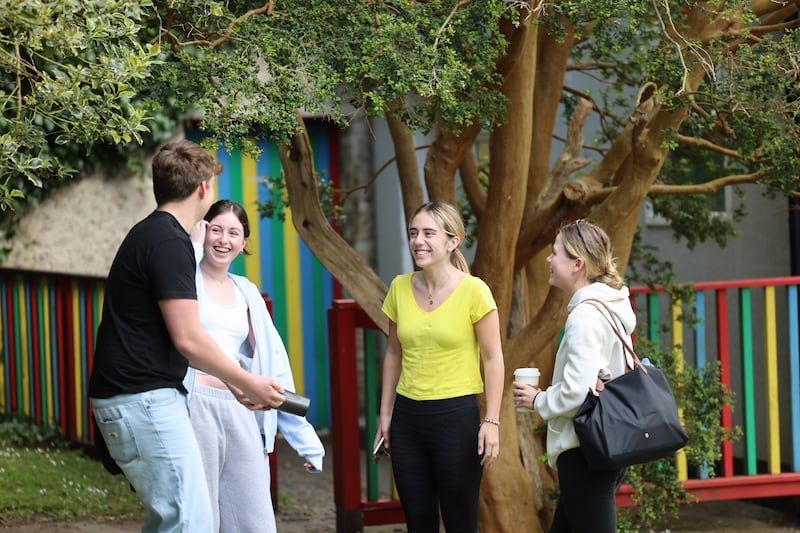
Leaving Cert Irish paper one: ‘At first glance many would have felt disappointed’
My colleague Éanna Ó Caollaí has filed a more detailed reaction piece on Leaving Cert Irish paper one, including both the higher level and ordinary level papers.
You can read it here.
The consensus among most teachers seems to be that the higher level paper was challenging in parts, especially given that some much-anticipated topics did not appear.
The ordinary level paper, by contrast, had something for everyone.
If today didn’t go well for you, bear in mind the advice of Clare Grealy, Irish teacher at the Institute of Education: “Tomorrow will be fine. The worst is over.”
Try this one at home...
The State exams are always a rollercoaster... but how fast is it travelling?
Today’s Junior Cycle science students had to calculate the acceleration of a rollercoaster and identify the forces at work. Can you figure it out?
It’s enough to get the heart racing...
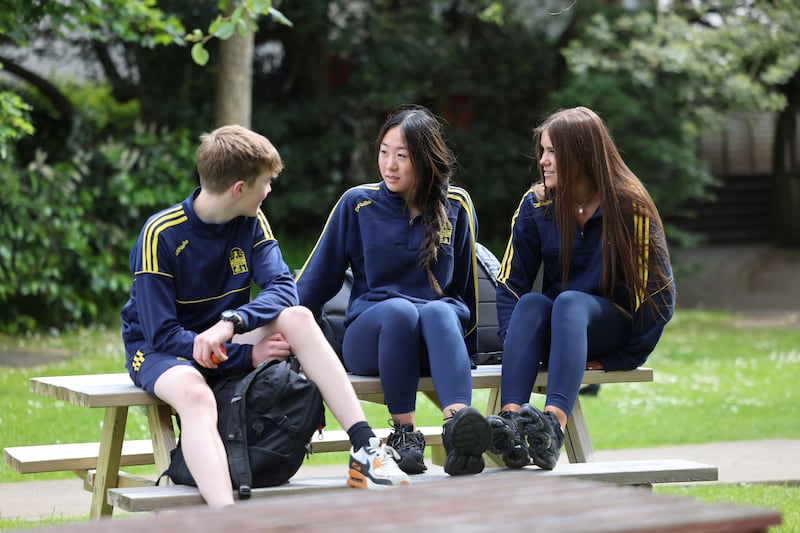
‘Many will feel deflated’: Reaction to Leaving Cert Irish paper one
Today’s Leaving Cert Irish higher level paper will have left many students disappointed after a “surprising” paper did not include key issues and topics many prepared for, according to some teachers.
Clare Grealy, Irish teacher at the Institute of Education, said much-anticipated topics like homelessness, war and violence did not appear in the essay section.
“At first glance many would have felt disappointed to see those key issues absent,” she said. “There were opportunities to use this material, as there were ample chances to use material prepared for the orals, yet these were indirect.
“Thus, students needed to take a deep breath and calm themselves as they plan their approach, weighing their strengths against the nuances of the questions.”
She said every question had accessible language, but each prompt contained a challenge that required students to address varied elements.
“These didn’t have to have equal space on the page but it was essential that both appear,” she said.
For example, she said the question on sport necessitated a discussion of pleasures and heartbreaks: the former being familiar territory for many, while the latter is a nuance that will differentiate the top achievers.
Similarly, the question on life in the countryside called for students to balance the contemporary with speculation about what rural life will be like in the future.
“The question of the quality of life of everyone would have allowed students to draw upon prepared material on the life of the teenager, but again requires them to contextualise this material,” she said.
“Vocabulary practiced to discuss war and violence could be used in discussion of Ireland and international affairs, but again a student needed to take the moment early on to catch their breath and orientate themselves.”
The debate and speech titles will have sparked déjà vu in those who revised the both deferred paper from 2023 and the Leaving Cert of 2021 as the topics of holidays and music both reappeared, Grealy said.
However the speech on music would be a red herring for many as the change from “importance of music” to “role of music” was a subtle change that will put many off the topic.
“In the end, students had opportunities to apply their study and secure their grades but they will likely have a muted reaction to the paper,” she said. “The absent topics and need to weigh different elements will have meant students needed to adapt in the moment to a paper that would have surprised many.”
Students started their paper one with the aural exam with “clear, concise clips delivered at a manageable pace”.
“The answers needed to be short and to the point as students were often given only one line to fit their answers,” she said.
Overall, she said there was scope for students to impress the examiners once they didn’t panic and draw on their knowledge and skills.
“Don’t worry, it’s over. It wasn’t a bad paper at all - it gave great scope once you took a deep breath... Tomorrow will be fine. The worst is over.”
Linda Dolan, an Irish teacher at Mercy College Sligo and Studyclix subject expert, agreed that the higher level paper may have presented a few difficulties for students today, especially regarding the cluastuiscint.
“The general consensus from students was that the language in the listening comprehension was challenging and also the pace was very fast. More time between each section would have been beneficial,” she said.
“The hotly anticipated topic of “Eire agus Cúrsaí Idirnáisiúnta” (Ireland & International Affairs) appeared in the essay section, as predicted also by Danielle from The Gaeilge Coach on Instagram.
“It would have been well received as it was a broad title and students could use it as an opportunity to showcase the vocabulary they learned over the last two years.”
She added: “The title “Cumhacht na Meán Sóisialta” (The Power of Social Media), I suspect, was another crowd pleaser as students would have build up phrases and foclóir even from Junior Cycle on this topic. The topics of music and holidays appeared in the debate section - areas that are much more straightforward that those that came up last year.”
Overall, she said, this paper may have proved challenging for some students today.
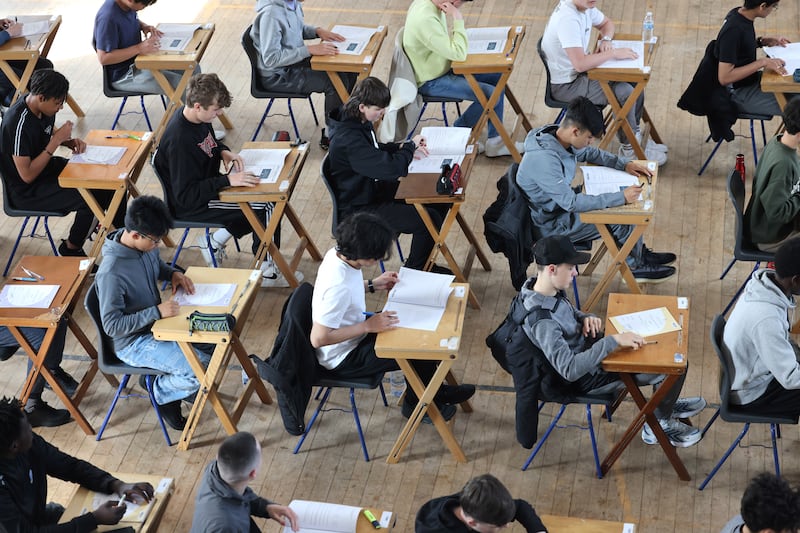
The polyglot Leaving Cert
Time was when “foreign languages” in the Leaving Cert amounted to French, German and - at a stretch for some very exotic schools - Italian.
These days there are more languages than ever being spoken in Irish schools - and record numbers are being assessed for them in the Leaving Cert.
As well as French, German, Italian and Spanish, you can take Ancient Greek, Arabic, Hebrew Studies, Japanese, Russian, Mandarin Chinese, Lithuanian, Polish and Portuguese.
There are also non-curricular languages, which are technically not part of the school curriculum, and a candidate may sit only one of these.
They include Bulgarian, Estonian, Modern Greek, Croatian, Finnish, Romanian, Czech, Hungarian, Slovakian, Danish, Latvian, Slovenian, Dutch, Maltese and Swedish.
From next year Ukrainian will be added to this list for the first time.
Leaving Cert maths paper two: ‘Overwhelmingly positive’ response from students’
My colleague Éanna Ó Caollaí has filed a detailed reaction piece to both the higher level and ordinary level maths papers.
The consensus is that both paper were fair and accessible, with enough challenges to differentiate between high-performing candidates.
You can read his piece here - and it has links to both exam papers.
Cue sighs of relief all round...
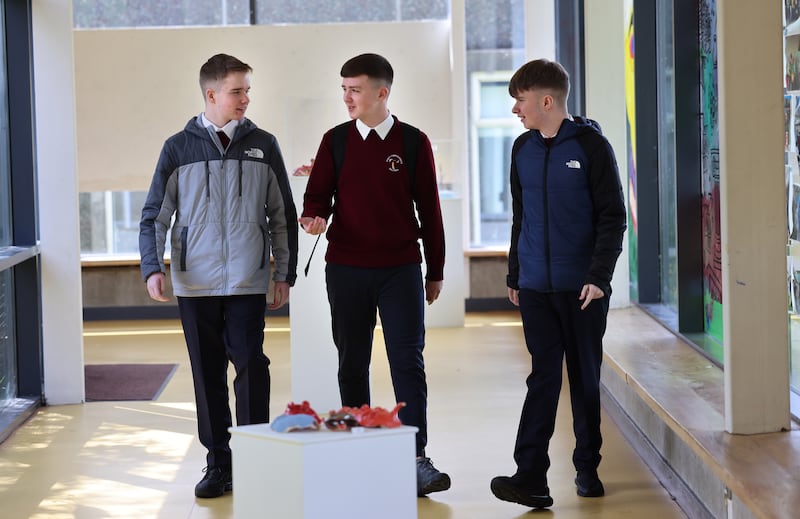
‘Well received’: Reaction to Junior Cycle science (common level)
This year’s Junior Cycle science paper was “reasonably fair and well received,” according to Liam Hennelly, a science teacher at Belvedere College in Dublin and subject expert for Studyclix.
“The content of the questions in section A was very fair and accessible. It would have allowed students to settle into the paper and to pick up a lot of marks in this section,” he said.
“It focused mainly on physics with 5/10 questions. There were three questions on biology and two questions on Earth and space with no question on chemistry in this section. As expected, section B of the paper was more challenging,” Hennelly said.
“Section B contained 7 questions worth 30 marks and a recurring theme in these questions is that topics from the different strands of the specifications were interwoven into the questions.”
Overall, Hennelly said this was an “accessible and reasonably fair” paper that would have been well received.
“However, the balance of the questions across the five strands could have been better. The lack of choice in the paper and the lack of challenge for more able students with one Common Level paper continues to be an issue,” he said.
‘Many will feel their work paid off’: Reaction to Leaving Cert maths paper two, ordinary level
Students were largely happy with today’'s higher level maths paper -- and the same seem to be true of the ordinary level paper.
Jean Kelly, a maths teacher with the Institute of Education, said students will “feel a reassuring sense of resolution as their work paid off.”
She said the questions drew from well-worn material that students will have covered countless times in the run up to their examinations.
“Those who worked through the sample paper will recognise the nearly identical Q3 (B) and Q4 (C). The questions were short and to the point, leaving no room to get lost in lengthy workings. Some will have felt that the paper led their hand through the material in a way that would be reassuring,” she said.
Kelly said there were questions asked on “everything”, even the rarely-seen sets, which made its third appearance in 14 years.
“Despite the breadth of the material, the questions were snappy and neatly itemized so students could deal with each bit individually,” she said.
“While some parts were heavy in Statistics and Probability, students will be relieved that their archnemesis trigonometry made only a quick appearance.
Overall, she said the students sitting this paper knew exactly what they were being asked to do and should have left with a clear appraisal of how they performed, with many happy that they have secured what they need for their courses.
“All in all, a good resolution to their time with Leaving Cert ordinary level maths,” she said.
Stephen Begley, head of maths at Dundalk Grammar School and Studyclix subject expert, agreed that paper two was “welcoming, fair and doable paper for students”.
“Most students seemed quite content on leaving the exam hall on what was a candid exam at ordinary level,” he said.
“Most questions were presented that the opening parts of each were very doable, while later parts provided challenge. Given the choice afforded by post-pandemic arrangements, students would have been able to play to their strengths answering four of the five short questions and three of the four long questions, a certain advantage to students.”
He said the short questions in Section A featured the usual suspects of statistics, probability, the line and circle, geometry and constructions.
“Students would have been comfortable working through these and developed a confidence going in to face the busier Section B. These questions were fairly direct and clear and didn’t contain too much text which can be an off putting feature of some exams. Students seemed content with the questions on offer here,” he said.
Section B would have delighted many students, he said, while Question 7 opened the section with a very doable and standard question on statistics, “something students would have been well prepared for”.
“A lovely trigonometry question followed which really prompted students on what to do by directly statistics ‘Use the Theorem of Pythagoras…' or ‘Use the cosine rule…'. This question was very welcome by students. Question 9 contained a mix of topics from counting and probability, to sets and trigonometry,” he said.
“The paper closed with a volume question with a touch of converting units at the start. Students would have found this a very approachable and workable question given the formulas provided in their log tables.”
Overall, he said it was quite a “nice, fair and doable” [aper two for Leaving Cert ordinary level students.
“It really was a candid snapshot of what is covered on the course and I feel it had an excellent balance of accessibility and challenge for students,” Begley said.
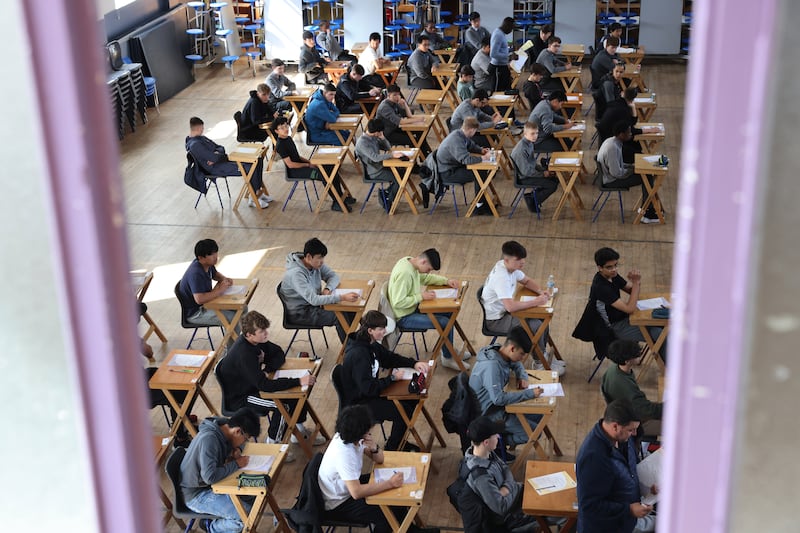
‘A good mix ... and no gremlins’: Reaction to Leaving Cert maths paper two, higher level
Following the warm reception to last Friday’s Leaving Cert maths paper one, there was some trepidation that maths paper two might haver a sting in the tail.
The good news is that the initial reaction from teachers is positive.
Brian Scully, maths teacher at the Institute of Education, said the higher level paper was “an accessible sibling to paper one” with a “few novel moments to distinguish those confident in different contexts”.
“Students will be pleased to find that there were no gremlins that might unfairly trip them up,” he said.
Overall, he feels it was a good mix of the causal language and novel questions that gradually increased the challenge of the paper.
He said the first question on stem leaf plots would have been familiar and recognisable as it drew from well-established material with the addition of unknown variables.
“The challenge was on the mechanical execution, not the comprehension. For example question 4 was a pure examination of curricular material rather than a test of its application,” Scully said.
“Later questions migrated to distinctly Higher Level only concepts, but the progression was logical and offered the opportunity for those students striving for H2s and H1s to distinguish themselves.”
A trend that carried over from paper one, he says, was the mixing of topics.
“Many questions tested the mental agility of students as they bridged numerous aspects of the course: sometimes overtly, sometimes subtly,” he said.
“For example, probability appeared in many questions, frequently alongside a different topic. Most of the challenges posed in these questions would be reflective of term time preparations.”
Areas consistently perceived as challenging by students, like the notation and language of Sets, were demanding in a manner that was familiar, he added.
“As such there were no additional gremlins thrown into this paper to upset the students or take this paper away from their expectations formed over their years of study,” Scully said.
The more challenging elements appeared in the less familiar moments.
Scully said the “ambiguous appearance of the sine rule and a novel question 9 might have worried some.”
The latter contained a unique diagram that required creative thinking and excellent understanding as it forced students to execute concepts in a context they will never have seen before.
“Yet, it was a trend that once students were brave enough to take that initial step into the question, their practice was rewarded by an emphasis on execution of concepts. Even the text heavy Question 10 was fair once you moved beyond the off-putting first impression.”
There was a similar reaction to the paper from Stephen Begley, head of maths at Dundalk Grammar School and a subject expert with Studyclix, though he said section B of the paper was more challenging.
“Students would have found today’s paper two busier than Friday’s Paper one – but fair and doable,” he said.
Begley said many will have found the short questions in section A very standard and reasonable, while section B’s long questions put students through their paces.
“Looking at topics covered the regular features of statistics, probability, trigonometry, geometry, the circle and the line dominated the short questions, while longer questions were based on statistics, probability, the circle, geometry and trigonometry,” he said.
Begley said students would have been comfortable working through the short questions, though would have had to think carefully through some, while the long questions certainly required some careful reading and thinking.
“The opening question to the paper replicated a Junior Cycle style question on statistics and would have eased some nerves,” he said.
“Some standard probability questions followed in question 2, while no curve balls were thrown in trigonometry on question 3. For those who studied their constructions and proofs would have been delighted with a direct question 4, and the coordinate geometry questions on the line and the circle were rather decent and approachable.”
He said the pace and intensity of the exam picked up in section B, where some “tricky bits were included to challenge students”.
“Question 7 on statistics and probability would have delighted many being similar in style to previous years. Question 8 put students through their paces for volume and geometry with a hint of calculus at the end, parts of which students may have found tricky. Questions were well prompted and if a student didn’t get one part it didn’t mean they were not able to tackle or complete subsequent parts,” he said.
Question 9, which was all about the circle and the line, required a “fair bit of careful thinking and application of their knowledge” he said.
“Really reading the questions, understanding the situation and visualising the scenarios was needed here,” he said.
“Closing the exam, Question 10 appeared with a rather busy and text loaded diagram and passage, but if students carefully read each question, it boiled down to a decent trigonometry question with some permutations at the end. Once again if a students could not complete one part to the question it did not disadvantage them in subsequent parts.”
Overall, he said the consensus was that section A was “quite nice”, while Section B was more challenging.
“At higher level we can expect some challenges and paper two had its fair and balanced amount of them,” he said.
“Much of the paper was doable, and the way in which questions were designed students were not ruled out of the race for not being able to complete a specific part, rather most questions did not require the previous answer to move forward. You can see the examiners careful consideration of this in the exams design.”
He added: “Overall, students should take comfort in the rather nice paper one from Friday alongside today’s paper and overall might agree that it was a fair, doable and approachable pair of exams.”
First look: Junior Cycle science
The exam paper for today’s common level Junior Cycle science exam has landed.
You can scroll through it below – we’ll have reaction here shortly
First look: Leaving Cert maths paper 2
The exam papers for today’s Leaving Cert higher level and ordinary maths paper are now available.
You can check them out below – we’ll have reaction here shortly.
‘I’ve one exam left ... already I feel very grown-up and responsible’
Leah O’Callaghan of Stepaside Educate Together Secondary School is one of our Leaving Cert diarists.
She is sitting the Leaving Cert Applied (LCA) and is relieved that she has just one exam left: horticulture on Wednesday.
Not everyone knows what the LCA is, and it isn’t on offer in every school.
“For me, however, it was the obvious fit. I went into transition year and really enjoyed it, as there was more focus on learning through doing, and experiencing life, than you otherwise get in second-level education. I dreaded the idea of going back to intense academic study. I always knew that I learned more by doing than by learning from a book.
“At that time, I spoke to one of my teachers and she told me about the LCA, which has a greater focus on life skills and experience over pure academics.”
You can read more on her diary here.
















